Silagra
Silagra dosages: 100 mg, 50 mg
Silagra packs: 30 pills, 60 pills, 90 pills, 120 pills, 180 pills, 270 pills
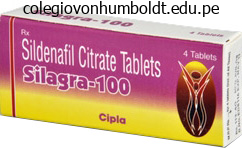
Cheap silagra master card
As many as 25% of sufferers with a stable malignancy may have microemboli that lodge within the pulmonary circulation. The commonest etiology of tumor microembolization is gastric most cancers, but breast, lung, ovarian, renal, hepatocel lular, and prostate cancers additionally may produce tumor emboli. Most emboli preferentially occlude small arteries and arte rioles, aside from atrial myxomas and renal automotive cinomas, which may type bigger, more centrally positioned, thromboemboli. Histopathological specimens in sufferers with pulmonary tumor embolization show seen tumor within pulmonary arteries, usually accompanied by lymphangitic tumor, orga nizing thrombi, pulmonary infarction, and intimal. Larger vessels may be affected, though small, peripherally situated pulmonary arteries (at the centrilobular artery level) may be affected as properly. Occasionally, myxoid intimal hyperplasia may be present and will induce arterio lar obliteration. Clinical Presentation Because tumor emboli are fairly small, signs related to tumor embolization are unusual. If the embolic load is Chapter 28 Pulmonary Hypertension 697 elicits an in ammatory, granulomatous response that pro duces vascular obstruction and, ultimately, pulmonary hypertension. When intravenous drug users abuse drugs containing talc, they intravenously inject a sus pension containing crushed tablets supposed for oral use, thereby embolizing small pulmonary arterioles with talc. The talc could migrate from the vessels into the encompass ing pulmonary interstitium, the place its presence elicits a for eign physique granulomatous response. This histopathological specimen exhibits tumor filling small pulmonary arterioles (arrows), producing a branching configuration. Clinical Presentation Mercury may be injected into the vascular system acciden tally or intentionally. Pulmonary talcosis normally produces few signs, but sufferers could present with continual, progressive shortness of breath, dyspnea on exertion, and cough. Imaging Manifestations Chest radiographs in patients with intravascular tumor embolization typically are normal, but generally they may resemble pulmonary lymphangitic carcinomatosis. When smaller vessels are affected (at the centrilobular level), beading and nodularity could additionally be observed, and the affected vessels might assume a branching con guration, resembling tree-in-bud. Lung scintigraphy may reveal subsegmental unmatched perfusion defects, indistinguishable from thromboembolic illness. Pulmonary angiography might present a delayed arterial part, intravascular lling defects with a beaded look, and peripheral pruning. Imaging Manifestations On chest radiography, mercury embolization seems as ne, branching, symmetric, very dense nodules represent ing intra-arterial mercury deposits. Metal deposits additionally might acquire throughout the heart, significantly at the apex of the proper ventricle. Chest radiographs in sufferers with talc embolization present diffuse, bilateral, small nodular opacities about 1 to 2 mm in diameter throughout the lung parenchyma. Perihi lar conglomerate plenty associated with brosis, producing retraction of lung parenchyma and relative hyperlucency in the decrease lung, may be seen in some patients. Cardiopulmonary schistosomiasis most frequently is the outcomes of an infection with Schistosoma mansoni, which is endemic 698 Thoracic Imaging within the Middle East, Africa, and South America. There usu ally is a latency interval of 5 years or extra after the onset of infection earlier than cardiopulmonary illness develops. Secreted ova migrate to the lungs by way of portal-systemic collaterals and lodge inside medium-sized muscular arteries and arterioles. Within the pulmonary circulation, the eggs elicit an in am matory reaction that ends in medial hypertrophy, granu loma formation, intimal hyperplasia, collagen deposition and brosis, and obliterative arteritis. In sufferers with sarcoidosis, postulated mechanisms producing pulmonary hypertension include capillary mattress destruction because of brosis, pulmonary artery and venous compression by lymphadenopathy, and granu lomatous in ammation instantly involving the pulmonary vessels, significantly the veins. Pulmonary hypertension is comparatively unusual in patients with lymphangioleiomyo matosis, however, when current, has been thought to be the result of hypoxemia due to capillary destruction caused by the cys tic lesions that characterize this condition. Also in Group 5 of the 2008 Dana Point classi cation of pulmonary hypertension are a variety of metabolic dis orders, similar to Gaucher disease, glycogen storage illness, and thyroid situations. Various mechanisms for the devel opment of pulmonary hypertension in these conditions include hypoxemia, pulmonary parenchymal disease, porto caval shunts (in the case of type Ia glycogen storage disease), and capillary blockade by Gaucher cells.
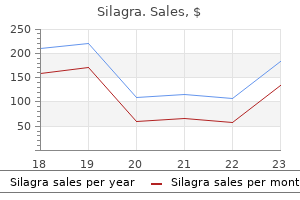
Silagra 100 mg purchase overnight delivery
Recurrent episodes of symptomatic cystitis requiring treatment occurred in 23% of patients after cecocystoplasty, 17% after sigmoid cystoplasty, 13% after cecocystoplasty and 8% after gastrocystoplasty. Bacteriuria must be treated for important symptoms corresponding to incontinence or suprapubic ache and maybe for hematuria, foul-smelling urine, or remarkably elevated mucus production. These sufferers are chronically dehydrated from water loss by way of the diversion producing concentrated urine which can be a nidus for stone illness. Additionally urinary stasis, mucous manufacturing from the intestinal segment and frequent colonization with urea-spitting organisms places the affected person in danger (3). Patients in whom massive segments of ileum have been removed might develop enteric hyperoxaluria which locations the affected person at risk for calcium oxalate stone formation. Hypocitraturia a risk factor for stone disease may be present in patient with continual metabolic acidosis and malabsorption abnormalities. Hypercalciuria is a results of the acidosis, and may result in mobilization of calcium from bone and impaired reabsorption from acid renal tubule fluid. Several series reported calculi in 18% of patients after augmentation cystoplasty (3, 43). Patients catheterizing via an abdominal wall stoma had the best threat, probably because of incomplete emptying. Palmer and associates (1993) noted urolithiasis in 52% of Augmentation Cystoplasty: in Pretransplant Recepients 301 sufferers after augmentation cystoplasty. Rink and colleagues (1995) famous solely an 8% fee of bladder stone formation in 231 sufferers with long-term follow-up after enterocystoplasty (51). Stones have been noted after using all intestinal segments, with no important distinction famous between small and large gut. Struvite stones are much less probably after gastrocystoplasty in all probability because of decreased mucus manufacturing and acid that minimizes bacteriuria. Uric acid calculi have rarely been famous in the bladder after gastrocystoplasty (37). Patients should be instructed in the significance of normal reservoir catheterizing. A low fat diet might reduce calcium saponification and enhance the quantity of calcium available to bind oxalate. The latency for improvement of such tumors averaged 26 years and ranged from three to fifty three years. Adenocarcinomas have been the outstanding tumors that developed, but benign polyps and different kinds of carcinoma have been additionally found (15). The precise foundation for the elevated danger is unknown; nevertheless, N-nitroso compounds thought to originate from a mix of urine and faces could additionally be carcinogenic. These compounds have been famous within the urine of sufferers with conduit diversion and augmentation (69). Husmann and Spence (1990) advised that these compounds are more doubtless enhancing agents rather than a lone trigger for tumor growth. It has been proposed that inflammatory reaction at the anastomotic website could induce progress issue manufacturing, which, in flip, will increase cellular proliferation (68). Filmer and Spencer (1990) recognized 14 sufferers who developed adenocarcinoma in an augmented bladder, and various other extra have been reported since then. Nine of these tumors occurred after ileocystoplasty and five after colocystoplasty (70). Experimental work in the rat demonstrated hyperplastic development in the augmented bladder with all intestinal segments, with no phase showing any significantly elevated danger (71). Patients present process augmentation cystoplasty must be made conscious of a potentially elevated risk for tumor improvement. The earliest reported tumor after augmentation was discovered solely four years after cystoplasty (72). Transitional cell carcinoma, hyperplasia, and dysplasia have additionally been noted close to the anastomoses in people.
Diseases
- Epimetaphyseal skeletal dysplasia
- Glucose-galactose malabsorption
- Fetal aminopterin syndrome
- Thrombocytopenia chromosome breakage
- Hyperglycerolemia
- Fugue state
- Chromosome 10, monosomy 10q
- Glycogenosis
Buy silagra online from canada
Typically, cal ci ed lymph nodes point out prior granulomatous disease, including tuberculosis, histoplasmosis and different fungal infections, and sarcoidosis, although quite a lot of diseases may be related to this nding. Confluent lymph node mass in a affected person with metastatic squamous cell carcinoma involving the pretra cheal and prevascular spaces. Rarely, lymph node calci cation is seen in untreated lymphoma or as mucinous adenocarcinoma or thyroid carcinoma. Usually, calci cation of adenocarcinomas is stippled or faint and dif cult to see on plain radiographs. Ly mph node calci cation may also be seen in patients with metastatic osteogenic sarcoma. Calci ed lymph nodes in the mediastinum or hila could erode into adjacent bronchi, resulting in broncholithiasis. The cal ci ed node, or broncholith, could additionally be expectorated or end in atelectasis, postobstructive pneumonia, or hemoptysis. B: Low-attenuation mediastinal lymph node with a densely enhancing rim (arrow) in metastatic breast carcinoma. C: Low-attenuation para vertebral lymph node metastasis from c testicular carcinoma. They are commonly seen in sufferers with tuberculosis, fungal infections, and neoplasms such as metastatic carcinoma and lymphoma. After injection of intravenous contrast agent, nodes bigger than 2 cm in diameter virtually always present cen tral areas of low attenuation with peripheral enhancement and an irregular wall. Low-density nodes also happen in sufferers with metastatic lung cancer (often when the first tumor also seems necrotic), metastatic seminoma, and metastatic ovarian, thyroid, and gastric neoplasia (Table 8-17). Low-attenuation or necrotic lymph nodes are seen in 10% to 20% of sufferers with lymphoma, both earlier than or after therapy. They have additionally been described in sufferers with quite lots of different entities, together with sarcoidosis. Differentiation between enhancing lymph nodes and enhancing mediastinal mass must be tried. Enhancing plenty embrace substernal thyroid and parathyroid lesions, neuroendocrine tumor, lymphangioma, hemangioma, and paraganglioma. Lymph Node Enhancement Normal lymph nodes could present some increase in attenu ation following intravenous contrast infusion. Pathologic lymph nodes with an elevated vascular provide could improve signi cantly in attenuation. B: Enhancing paravertebral (paraaortic) lymph node metastases (arrows) from a paraganglioma. In addition to superior mediastinal node groups, websites of lymph node enlargement, so as of reducing frequency, include hilar nodes, subcarinal nodes, cardiophrenic angle (paracardiac) lymph nodes, internal mammary nodes, and posterior mediastinal nodes. Low signal intensity has been famous in calci ed nodes on T2-weighted photographs in patients with brosing mediastinitis; nevertheless, this look is nonspeci c. Multiple enlarged lymph nodes are sometimes seen, and they can be properly de ned and discrete, matted, or associated with diffuse mediastinal in ltration. Nonetheless, superior mediastinal node involvement is the most typical abnormality seen; 35% of patients have superior mediastinal (prevascular and pretracheal) node involvement. Subcarinal lymph nodes, hilar nodes, and cardiophrenic nodes are much less typically abnor mal. The most typical cell sorts presenting on this trend are T-cell lymphoblastic lymphoma and huge B-cell lymphoma. It often leads to a sys temic illness, associated with fever, anemia, infections, and malignancies similar to lymphoma or Kaposi s sarcoma. When related to localized node involvement, such systemic ndings usually disappear following complete resection; how ever, the multicentric form of disease is dif cult to treat and usually progressive, even with the utilization of steroids and chemo therapeutic agents. In patients with acute or persistent myelogenous leukemia, plenty of malignant myeloid precursor cells could also be present in an extramedullary location; these lots are termed granulo cytic sarcoma or chloroma. Histologically, two forms of the illness have been described: the hyaline-vascular type and the plasma cell sort (Table occulent lymph node cal ci cations are often seen. Patients with the hyaline-vascular sort are often youngsters or young adults and are normally asymptomatic; 256 Thoracic Imaging A than 3% of cases. The extrathoracic tumors more than likely to metastasize to the mediastinum are carcinomas of the pinnacle and neck, genitourinary tract, breast, and malignant mela noma.
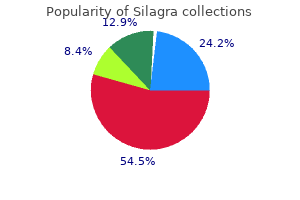
Generic silagra 100 mg with mastercard
If the proper atrium is enlarged, then this signpost points to tricuspid regurgitation. If no signposts are present, then the favored diagnostic concerns are congestive (dilated) cardiomyopathy or pericardia! The pulmonary vascularity is also usually regular for a lot of the course of aortic stenosis. Mitral Stenosis the features of a thoracic and radiograph are regularly diagnostic for mitral stenosis. Frontal thoracic radiograph demonstrates left atrial and proper ventricular enlargement. Left atrial enlargement is indicated by proper retrocardiac double density (arrow) on the frontal view. There is pul monary arterial hypertension as proven by enlargement of the main and central pulmonary arteries. Right ventricular enlargement is indicated by lateral displacement of the ventricular mar gin (apex uplifted) on the frontal view. Likewise, the radiograph provides considerable insight into the severity of mitral stenosis. Hypertrophic Cardiomyopathy the chest radiograph is neither specific nor delicate for the diagnosis of hypertrophic cardiomyopathy. More than 50% of patients with hypertrophic cardiomyopathy have a standard chest x-ray. Approximately 30% of patients with symptomatic hypertrophic cardiomyopathy have associated mitral regurgitation. Because of the mitral regurgitation, there again is a proclivity to left atrial enlargement. Frontal view exhibits borderline cardiomegaly and prominence of the complete thoracic aorta. This focal enlargement is a consequence of maximum enlargement of the upper or outflow portion of the ventricular septum (Table 30-9). In the obstructive form (subaortic stenosis), ascending aortic enlargement is infrequent. During the early stage of restrictive cardiomyopathy the cardiac dimension is within normal limits. Restridive Cardiomyopathy Restrictive cardiomyopathy is a relatively rare illness that will occur in an idiopathic kind or could be the form of cardiomyopathy that may be a consequence of various infiltrative 30-26). Enlargement of the left atrial appendage is frequent and suggests a rheumatic etiology. Right ventricular enlargement signifies some degree of pulmonary arterial hypertension or associated tricuspid regurgitation. Right ventricular enlargement within the absence of prominence of the primary pulmonary artery suggests associated tricuspid regurgitation. The ascending aorta and aortic arch are usually inconspicuous in isolated mitral stenosis. Even slight enlargement of the thoracic aorta raises the question of associated aortic valve disease. Frontal (left) and lateral (right) radiographs show inter stitial pulmonary edema and left atrial and right ventricular enlargement. Note alveolar filling in perihilar areas and decrease lobes with normal coronary heart dimension. Consequently, an irregular contour or a double density localized to these sites ought to increase the consideration of this prognosis. The preliminary chest x-ray film in acute myocardial infarction: prediction of early and late mortality and survival. Partial rupture of the papillary muscle, leading to much less severe mitral regurgitation, might produce a average degree of mitral regurgitation and less extreme or even no evidence of pulmonary edema. The dramatic radiographic findings in acute papillary muscle rupture are pulmonary edema with little improve in left atrial measurement or cardiomegaly. Postinfarction rupture of the ventricular septum may produce a radiographic look very similar to that of acute mitral regurgitation. The radiographic signs of acute ventricular septal defect embody an increase within the prominence of the pulmonary arteries. Abnormal evagination of left cardiac border (arrowheads) is typical for an aneurysm involving the anterolateral and/or apical segment of the left ventricle.
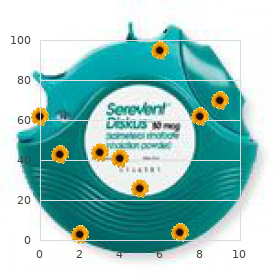
Purchase silagra 50 mg with visa
The second region surrounds the attachment of the inferior vena cava, superior vena cava, and pulmonary veins, delineating a cul-de-sac behind the left atrium known as oblique sinus. Knowledgeof thecross-sectional anatomy ofthe pericardial recesses is crucial for its differentiation from lymph nodes or abnormalities of adjoining mediastinal buildings. In the setting of malignancy, a misinterpretation of a traditional recess as lymphadenopathy may result in inappropriate staging of tumors. Occasionally, one of the recesses could be rather more prominent than the others, rising the possibilities of misinterpretation. In regions adjacent to the lung, the natural distinction is lower, so that the sensitivity for visualization within the space of the lateral wall of the left ventricle is decrease. Also shown are the oblique sinus (arrowhead) and left pulmonic vein recess (asterisk). This impact outcomes from the ligamentous insertion of the pericardium into the diaphragm and from its tangential path to the imaging airplane. The latter include serous, fibrinous, purulent, and hemorrhagic or (rarely) chy lous pericardia! Subacute and persistent hematomas are normally heterogeneous with both high and lowsignal depth regions on Tl-weighted pictures. A thick ened pericardium can be seen (arrowhead), consistent with an inflammatory course of. The homogeneous low-intensity collection compressing the left ventricle (D) is a typical presentation cardia! Fungal (histoplasmosis, coccidioidomycosis, Candidosis, aspergillosis, cryptococcosis, etc. Neoplastic (especially lymphoma, melanoma, lung most cancers, breast cancer, leukemia) 5. Drug response (adriamycin, hydralyzine, procainamide, diphenylhydantoin, methysergide) 10. Idiopathic a small simple effusion and the adjoining low signal of normal parietal pericardium. However, a semiquantitative estimation can be obtained by measuring the width of the pericardia! It is a nonspecific response to varied circumstances, similar to infectious pericarditis, connective tissue illness, neoplasm, trauma, long-term renal dialysis, cardiac surgery, and radiation therapy (Table 34-5). Currently, constrictive pericarditis is most often a sequela of cardiac surgery in Europe and North America. However, tuberculous pericarditis remains a quantity one cause of constrictive pericarditis in Third World international locations. As a result of inflammatory processes, fibrosis of the Loculated effusion occurs when fluid is trapped by adhesions between the parietal and visceral pericardium. After contrast media administration, the pericardium exhibits numerous levels of typically with concomitant calcifications. The less com pliant pericardium impedes ventricular and/or atrial filling, depending on the extent of the illness. Because the free walls of ventricular chambers have restricted growth during diastole, the volumetric capacity of 1 ventricle is strictly associated to the filling of the opposite-sided ventricle. Therefore, minimal and instantaneous differences in ventricular filling end in diastolic ventricular septal motion toward the left ventricle. Contrast-enhanced (A) reveals enhancement of the pericar (arrows) and a small pericardia! Acute inflammatory constrictive pericarditis presents as an acute pericarditis with marked thickening of the pericardium related to constrictive physiology. The as continual fibrous constrictive pericarditis inflammatory course of can resolve completely or turn into pericarditis is subacute constrictive pericarditis primarily involving the visceral pericardium and related to a persistent pericardia! It is usually recognized when constrictive physiology remains after drainage of the pericardia! Acute pericardi tis; Tl weighted spin echo images after late before (left) and (right) gadolinium che administration. Sigmoid shaped ventricular septum Various patterns of distribution have been described including world, right-sided, left-sided, and focal. The focal sort usually involves the atrioventricular groove and thereby may impede right atrial, and fewer frequently, left atrial emptying.
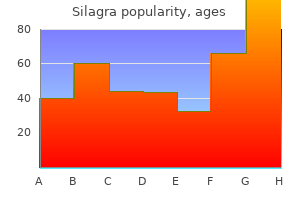
Silagra 50 mg purchase online
A fifth group consists of patients with primarily pulmonary venous congestion 31-2). Therefore, when deciphering the chest x-ray, the physician attempts to resolve which class or class of congenital coronary heart lesions exists. The determination on the specific lesion is often primarily based on the statistical frequency of a par ticular cardiac lesion within one or more teams. Based on the medical and radiographic findings, there are 5 teams of congenital heart lesions. Group I: left-to-right shunts Noncyanotic: Sometimes signs of pulmonary con gestion or congestive heart failure. Hilar vessels are small and segmental pulmonary arteries are hardly seen, espe cially in the higher lobes. Vector of enlargement of the apex of the center is directly lateral, indicating proper ven tricular enlargement. Pulmonary arterial overcirculation is proven by massive hilar and segmental pulmonary arteries. Note pulmonary arte rial overcirculation within the presence of cyanosis and cardio megaly. It is frequently troublesome to distinguish between normal and diminished pulmonary vascularity. The criteria that place a patient within this category are for essentially the most half dependent on the scientific recognition of the absence of cyanosis with the sub sequent demonstration on the chest radiograph of increased pulmonary arterial vascularity. Consequently, the major statement on the radiograph by means of pulmonary vas cularity in the cyanotic patient is to decide whether or not the pulmonary vascularity is increased. Normal or diminished pulmonary vascularity in a patient with cyanosis signifies that the lesion produces a right-to-left shunt. The degree of cardiomegaly is often in proportion to the increase in pulmonary vascularity. Note pulmonary arterial overcir evidenced by shunt vessels and outstanding hilar vessels. Left atrial enlargement produces impression on and dis placement of the barium-filled esophagus, as shown on the lateral view. The prominent aortic arch (arrow) and descending aorta are diagnostic indicators of pat ent ductus arteriosus. On the lateral view, the enlarged left atrium causes posterior displacement of the left bron chus (arrowhead). In infants, prominence of the aortic arch could additionally be tough to acknowledge, so this signpost might not at all times be available. The extreme quantity overload with large left-to-right shunts causes pul monary venous congestion or pulmonary edema in addition to pulmonary arterial overcirculation. In indi viduals with large left-to-right shunts, there also wants to be substantial cardiomegaly. When cardiomegaly exists out of proportion to the pulmo nary arterial vascularity, then one must contemplate a variety of possibilities. Another consideration is the coexistence of further cardiac lesions, corresponding to pri mary myocardial illness or coarctation of the aorta. Two signposts can be used to help distinguish among the numerous forms of left-to-right shunts. Large-volume left to-right shunt inflicting pulmonary edema, severe pulmo nary arterial overcirculation, and cardiomegaly. Indistinct hilar and segmental arteries on the best facet are brought on by interstitial edema. Note pulmonary oligemia with more diminished vascularity on the left, particularly the left upper lobe. Normal heart size and concave pulmonary artery phase are characteristic options in the infant. The affected person with tricuspid atresia with a big atrial septal defect demonstrates little or no cardio megaly. On the opposite hand, the affected person with tricuspid atresia with a restrictive atrial septal defect expe riences substantial proper atrial enlargement, which results in cardiomegaly. The remaining diagnostic concerns are, for the most part, variants of tetralogy of Fallot.
Sarracenia purpurea (Pitcher Plant). Silagra.
- Dosing considerations for Pitcher Plant.
- How does Pitcher Plant work?
- What is Pitcher Plant?
- Digestive disorders, constipation, urinary tract diseases, fluid retention, preventing scar formation, pain, and other conditions.
- Are there safety concerns?
Source: http://www.rxlist.com/script/main/art.asp?articlekey=96145
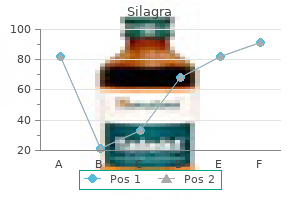
Discount silagra 50 mg buy line
A,B: Delayed-enhancement pictures at two brief axis planes present midwall (arrow) and subepicardial (arrowhead) patchy hyperenhancement in a patient with myocarditis. Progressive the brotic alternative of the myocardium reveals a patchy midwall or Cardiac Noncompadion this will exist in an entire form, which often causes demise in infancy, or an incomplete form, which can cause coronary heart failure in early maturity. The endocardial wall of the left ventricle appears as a unfastened community of trabeculations. Characteristic features are ventricular wall thickening coupled with regional or world hypokinesis, areas of delayed hyperenhancement within the ventricular wall, and pericardia! The changes of the ventricular wall are located predominantly in the anterolateral wall and the apical area of the septum. In persistent Chagas illness, the guts is the most incessantly affected organ, and lymphocytic in ltration may be observed. Apical aneurysm of the left ventricle is a attribute of continual Chagas disease. Increased international myocardial early gadolinium enhancement ratio between myocardium and skeletal muscle (ratio 4. Focal lesion(s) of late gadolinium enhancement in nonischemic harm distribution four. These adjustments had been interpreted as an indication of early transforming of the left ventricle. To cut back the need for biopsy, a modality that could exchange this invasive test or ef ciently guide its timing would be fascinating. The transplanted heart not only is at risk for rejection but also is subjected to the unwanted facet effects of immunosuppressive drug remedy. Therefore, if total long-term success rates are to enhance, not solely the common follow-up of individual transplant recipients but additionally the analysis of new therapeutic approaches might be needed. A diagnostic criterion evaluated on this aircraft is the ratio of thickness of noncompacted myocardium to thickness of the compacted (solid) myocardium. Report of the 1995 World Health Organization/International Society and Federation of Cardiology Task Force on the De nition and dassi cation of Cardiomyopathies. Cardiac T2* magnetic resonance for prediction of problems in thalassemia major. There are several imaging strategies which are efficient for the analysis of pericardial diseases. The imaging modality initially and most are frequently utilized identified is transthoracic of the on computed echocardiography. Images of the complete heart may be acquired with a number of breath holds or during free-breathing. New methods with a phased-arrayed coil can picture the guts with a high temporal decision. The imaging modality of alternative for initial analysis of patients with suspected pericardial effusion is transthoracic echocardiography. This extensively out there and comparatively low value methodology has a high accuracy for detection of pericardial effusion and signs of tamponade. It can also be a good method for guiding diagnostic or therapeutic pericardiocenteses. The major limitation of echocardiography in pericardial diseases is its incapability to assess the complete pericardial extension. It is also not very accurate for depiction of pericardial thickening, as a result of echogenicity of the pericardium is similar to adjacent tissues. The visualization of the whole chest also can give important data for differential prognosis and extent of pericardial diseases. Both methods provide some data on tissue characterization, which is helpful for the diagnosis of pericardial masses and pericardial inflammation. Parietal pericardium consists of fibrous tissue with an internal layer of mesothelial cells that mirror in the areas of pericardial attachment and cover the floor of the heart, forming the visceral pericardium. Car diac gated axial photographs before after (left) and (right) iodinated contrast media present regular look of a thin pericardium, greatest seen adjoining to the proper ventricular free wall (arrows). Although the pericardium is visible over the right cardiac chambers in most studies, it will not be seen over the lateral and posterior walls of the left ventricle. The first region surrounds the proximal two thirds of the ascending aorta and pulmonary artery out to its bifurcation, and is called transverse sinus.
Discount 100 mg silagra free shipping
Treatment using surgery could also be dif cult but is directed at relieving the compression or obstruction of important mediastinal buildings. It is most frequent within the center or posterior mediastinum, however could occur in any location. Other Mesenchymal Tumors Fibrosarcoma, malignant brous histiocytoma, leiomyoma, leiomyoma, leiomyosarcoma, rhabdomyosarcoma, and malig nant tumors of bone and cartilage are uncommon mediastinal tumors. Bronchogenic cyst, esophageal duplication cyst, and neurenteric cyst outcome from abnormalities in foregut development and are termed foregut duplication cysts. They hardly ever occur within the anterior mediastinum or the inferior facet of the posterior mediastinum. On plain radiographs, bronchogenic cysts appear as easy, sharply marginated, round or elliptical masses. Subcarinal cysts might end in convexity within the supe rior facet of the azygoesophageal recess. Cysts account for about 10% of primary mediasti nal masses in each adults and youngsters. Because of the variable composition of the uid Bronchogenic Cyst Bronchogenic cysts are most common, representing about 60% of foregut duplication cysts (Table 8-24). They prob ably result from faulty growth of the lung bud during fetal growth. Bronchogenic cysts are lined by pseu dostrati ed ciliated columnar epithelium, typical of the respiratory system, and regularly are associated with smooth muscle, mucous glands, or cartilage within the cyst wall. An important clue to the analysis may be their lack of enhancement on scans obtained following intravenous contrast infusion. Mediastinal bronchogenic cysts hardly ever contain air or become contaminated, though that is common in sufferers with a pulmonary bronchogenic cyst. High sign intensity is characteristically seen inside cysts on T2-weighted sequences whatever the nature of the cyst contents, but a variable pattern of signal depth may be seen on Tl-weighted sequences, presumably because of variable cyst contents and the presence of protein or mucoid material and/or hemorrhage. A high intensity on Tl-weighted pictures re ects high protein content and is widespread with bronchogenic cysts. Bronchogenic cysts may be current in any part of the mediastinum but are mostly located in the mid dle or posterior mediastinum, near the carina (50%), within the paratracheal area (20%), adjoining to the esophagus (15%), or in a retrocardiac location (10%). Most occur in contact with the tracheobronchial tree and inside 5 cm of the carina. A: A massive clean spherical right mediastinal mass (arrow) is vis ible on chest radiograph. B: In one other pat ient, a low-attenuation subcarinal bronchogenic cyst (arrow) is visible. Large bronchogenic cysts could also be associated with symp toms because of compression of adjacent buildings such as the trachea and carina, mediastinal vessels, and left atrium. However, enlargement over years is typical, and rapid enlargement associated with ache can indicate hemorrhage or an infection. Recently, percutaneous and transbron chial needle aspiration has additionally been used for the analysis and remedy of bronchogenic and esophageal duplication cysts. It occurs within the posterior mediasti num and is linked to the meninges inside the spinal canal via a midline defect in a number of vertebral bod ies. They are composed of both neural and gastrointestinal elements, including gastric, salivary gland, adrenal, pancre atic, and intestinal tissues. Sixty percent are discovered within the lower center or posterior mediastinum, adjacent to the esophagus, and are typically 8-55); vertebral anomalies. B: Transaxial T2-weighted, fat-saturated picture reveals excessive sign depth typical of cyst (arrow). In this location, they often are seen to prolong into the major shape on lateral chest ssure, having a lenticular lms. When occurring within the higher mediastinum, they might be seen to have a relationship to the superior pericar dia!
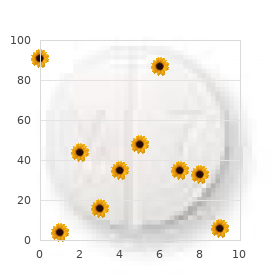
50 mg silagra purchase free shipping
A 5-mm laparoscope can be introduced via the lower left port to transilluminate the mesentery and determine its vascular pedicle. Exteriorizing the bowel loop outside the stomach through a 2-cm extension of the umbilical port website, stopping twisting of the mesenteric vessels; Using conventional open surgical methods, the bowel section is isolated, bowel continuity is re-established, mesenteric window is closed, the bowel section is detubularized alongside its antimesenteric border and reconfigured (117,118). Alternatively, bowel division and side-to-side anastomosis may be done intracorporeally using endoscopic gastrointestinal stapling system with detubularization and freehand intracorporeal suturing to reconfigure the bowel (119). Incising the peritoneum, getting into the area of Retzius, mobilization of the bladder. Circumferential completion of enterovesical anastomsis in quadrants intracorporeally with operating sutures. In addition to using a bowel segment for augmentation, in lots of of those cases they were additionally capable of laparoscopically mobilize the appendix to carry out a Mitrofanoff continent catheterizable stoma. Many of those sufferers were kids and this allowed a rapid recovery with decreased ache as properly as an excellent cosmetic result (120). Gill and associates (2000) underwent laparoscopic enterocystoplasty for three patients with functionally decreased bladder capacities because of neurogenic causes: ileocystoplasty (n=1), sigmoidocystoplasty (n=1), and cystoplasty with cecum and proximal ascending colon (n=1). In all sufferers, bowel reanastomosis was performed by exteriorizing the bowel loop outside the stomach. All three laparoscopic enterovesical anastomoses had been water tight without postoperative urinary extravasation. Rackley and associates (2001) performed laparoscopic enterocystoplasty in 12 patients with functionally reduced bladder capacities owing to neurogenic causes. Procedures included ileocystoplasty (2), sigmoidocystoplasty (2), colocystoplasty (1), and cecocolocystoplasty with continent catheterizable ileal stoma (7). The solely intra-operative complication was a trocar-induced rectus sheath hematoma. Unlike the previously published stories, the place portions of the process had been carried out extracorporeally, Elliott and associates (2002) reported their strategy of full laparoscopic ileocystoplasty (119). In this case, the process required 70 min, follow-up of the patient at 1 year, documented improvement in his symptoms with uncommon incontinence (121). In 1995, McDougall and colleagues described the preliminary laparoscopic retropubic autoaugmentation of the bladder in an adult (12). In this case, the extraperitoneal strategy was used and the incision was made within the detrusor muscle leaving the mucosa intact. However, in a second case, while the procedure could probably be successfully accomplished, the long-term outcome was unsatisfactory. Due to the success of enteric augmentation and the variable outcomes with autoaugmentation, this procedure has largely fallen into disuse (122). Nevertheless, laparoscopic retropubic autoaugmentation permits a quick hospital stay and minor postoperative discomfort. Conclusion Laparoscopic enterocystoplasty is technically feasible and successfully emulates the established rules of open enterocystoplasty whereas minimizing operative morbidity. As is true in open surgery, varied bowel segments can be customary and anastomosed to the bladder laparoscopically. The increased costs related to laparoscopy and weight minimally invasive surgery normally have been a significant disadvantage; nevertheless, a pervious report on the costs of laparoscopic procedures concluded that elevated surgical expertise reduces the surgical time and length of hospital keep, thereby lowering prices. Furthermore, the elevated use of reusable devices ends in considerable economic advantages. Implementation of acceptable cost-saving methods ultimately will result in decreased expenses related to laparoscopy. Although laparoscopic enterocystoplasty is currently a lengthy process lasting twice so lengthy as open surgery, further technical modifications and rising experience will continue to reduce the surgical time concerned. Intestinocystoplasty and total bladder replacement in children and young adults: follow-up in 129 cases. Selection of intestinal segments for bladder substitution: bodily and physiological characteristics. Gastrocystoplasty: An alternative answer to the issue of urological reconstruction in the severely compromised patient. [newline]Reid C, Reinbert Y: Sermoucular colocystoplasty lined with urothelium: experience with sixteen sufferers. J Urol 1995; 153: 1432-1438 [56] Pannek J, Haupt G, Schulze H, et al: Influence of continent ileal urinary diversion on vitamin B12 absorption. Fisch M, Ermert A, et al: Urinary diversion and orthotopic bladder substitution in youngsters and younger adults with neurogenic bladder: A safe option for remedy Presented at the European Society of Pediatric Urologists Meeting, Istanbul, Turkey. Subsequently, endothelial injury, irritation and platelet aggregation may be provoked, resulting in vascular thrombosis, occlusion of blood supply and rejection.
Discount silagra online master card
Acknowledgment We thank the "Inter-University Consortium for Organ Transplantation". A easy clinico-histopathological composite scoring system is very predictive of graft outcomes in marginal donors. Delayed graft operate of greater than six days strongly decreases long-term survival of transplanted kidneys. Immunosuppression for delayed or sluggish graft perform in primary cadaveric renal transplantation. Creatinine reduction ratio and 24-hour creatinine excretion on posttransplant day two. Clinical determinants of multiple acute rejection episodes in kidney transplant recipients. Nomogram for predicting the likelihood of delayed graft operate in grownup cadaveric renal transplant recipients. Reduced graft perform (with or without dialysis) vs immediate graft function � A comparability of longterm renal allograft survival. Donor Quality Scoring Systems and Early Renal Function Measurements in Kidney Transplantation 235 Lai, Q. Delayed graft function decreases early and intermediate graft outcomes after expanded criteria donor kidney transplants. Identification of the optimum donor high quality scoring system and measure of early renal operate in kidney transplantation. Assessing and comparing rival definitions of Delayed Renal Allograft Function for predicting subsequent graft failure. Improving the prediction of donor kidney quality: deceased donor rating and resistive indices. Multivariate analysis of donor threat factors for graft survival in kidney transplantation. Predictive traits of delayed graft operate after expanded and standard criteria donor kidney transplantations. Early experience with dual kidney transplantation in adults utilizing expanded donor standards. Creatinine discount ratio on post-transplant day two as criterion in defining delayed graft function. Report of the Crystal City assembly to maximize the utilization of organs recovered from the cadaver donor. Comparison of early renal operate parameters for the prediction of 5-year graft survival after kidney transplantation. Increased kidney transplantation utilizing expanded standards deceased organ donors with outcomes comparable to standard standards donor transplant. It was reported that the utilization of pancreata confirmed a wide variation depending on the region. To approach a point of standardization, we calculated the ratio of pancreata used for transplantation with the variety of livers procured and transplanted. Using the info from our own institution, we had experienced that no much less than 70% of liver donors ought to provide acceptable pancreas grafts. The outcomes of the study, nevertheless, demonstrated that in some regions, lower than 20% of liver donors yielded pancreas grafts. Ensuing dialogue revealed that the dearth of established standards to predict the result of pancreas transplantation based mostly on out there donor criteria was one of many reasons many facilities, particularly much less skilled applications, have been hesitant to accept donors other than these expected to present glorious pancreas grafts, and due to this fact, outcomes. Since then, few publications have addressed the correlation between available donor criteria and short- or long-term outcomes. A distinctive function of this research is the reality that long-term follow up is out there up to 22 years. In common, the retrieval staff consisted of a transplant surgeon or a Board-certified/eligible surgeon, a transplant fellow and a procurement specialist.
Real Experiences: Customer Reviews on Silagra
Musan, 22 years: Valvular stenosis exerts a pressure overload, which involves the compensatory mechanism of myocardial hyper trophy.
Tukash, 35 years: A: Frontal chest radiograph exhibits patchy right decrease lobe consolidation, according to broncho pneumonia.
Campa, 38 years: There usu ally is a latency period of 5 years or extra after the onset of an infection before cardiopulmonary disease develops.
Thorus, 26 years: In addition to the degree of renal dysfunction, length and explanation for renal failure also needs to be thought of when evaluating candidates for liver transplantation alone or mixed liver kidney transplantation.
8 of 10 - Review by H. Quadir
Votes: 47 votes
Total customer reviews: 47
References
- Landercasper J, Cogbill TH, Merry WH, et al. Long-term outcome after hospitalization for small-bowel obstruction. Arch Surg. 1993;128:765-770; discussion 770-761.
- Spodick DH. Eosinophilic myocarditis. Mayo Clin Proc. 1997;72:996.
- Naslund, M.J., Carlson, A.M., Williams, M.J. A cost comparison of medical management and transurethral needle ablation for treatment of benign prostatic hyperplasia during a 5-year period. J Urol 2005;173:2090-2093.
- Kovar H. Downstream EWS/FLI1: upstream Ewing's sarcoma. Genome Med 2010;2(1):8.
- Frishman WH, Halprin S. Clinical pharmacology of the new beta-adrenergic blocking drugs. Part 7.
- Kyllerman M, Steen G. Intermittently progressive dyskinetic syndrome in glutaric aciduria. Neuropediatrics 1977;8:397.
- Kulchavenya E: Epidemiology of urogenital tuberculosis in Siberia, Am J Infect Control 41:945n946, 2013.
- Shernan SK, Fitch JC, Nussmeier NA, et al: Impact of pexelizumab, an anti-C5 complement antibody, on total mortality and adverse cardiovascular outcomes in cardiac surgical patients undergoing cardiopulmonary bypass, Ann Thorac Surg 77:942, 2004.



